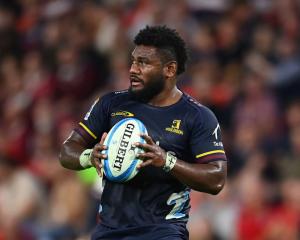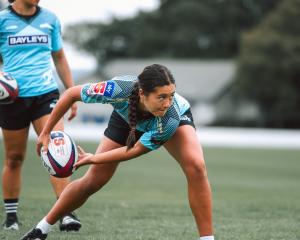Players will be able to stay in New Zealand and get rich under a game-changing broadcast deal.
Broadcasters will pay about $70 million a season for the next five years - almost double their previous fee - to own the NZ rights to Super Rugby, All Blacks and Mitre 10 Cup.
Talks are also advancing with main All Blacks sponsor AIG to renew its agreement. If that is extended, the expectation is that it will be for considerably more than the existing deal which was signed in 2012.
These are boom times for the game and there is potential for this influx of cash to have a profound effect.
NZ Rugby and the Rugby Players' Association think so too. They have been trying to agree terms on a new collective contract for some time.
With more money comes more choice. The challenge is determining which areas need to benefit most from this higher revenue.
NZ Rugby has already decided to boost funding to provincial unions by 30 per cent. But the two bodies have to ask what other parts of the game need more funding - and in terms of players, who should be the main beneficiaries of this increased pot of cash?
About 37 per cent of revenue deemed to be player-generated is put aside into a payment pool. There's a bigger pie for the players to share, but it doesn't always follow that there will be pay rises for everyone.
Despite the constant talk of All Blacks being vulnerable to huge overseas offers, the reality is the top echelon of players in NZ are already well looked after. Apart from the occasional ridiculous offer, the money the top players can earn in New Zealand isn't so far removed from what they would likely be paid in Europe.
The best earn close to $1 million a year from a mix of their base retainer, test match fees and endorsements.
The more vulnerable group are the emerging younger players - the likes of Beauden Barrett, Malakai Fekitoa and Nehe Milner-Skudder.
European clubs would pay a premium for such players - as seen last year when Ulster stumped up a reported $1 million a year for Charles Piutau. It is believed his offer to stay in NZ was about $220,000 - typical of a player in his early 20s on the edge of the All Blacks - and with such a disparity, he chose to leave.
At the moment, NZ Rugby is never comfortable that its next generation of stars are going to hang around.
The other group of players that may benefit in the new deal are senior Super Rugby players who aren't test regulars. Financial incentives are already in place for those with five or more years of Super Rugby experience to play in the Mitre 10 Cup and those packages may be increased.
Also tempting will be to better pay the full time sevens players. NZ Rugby has made it a strategic goal to win Olympic gold - men and women -at both the Rio and Tokyo Olympics and it could be argued current pay levels don't reflect the size or importance of the union's ambition.
Sevens contracts for men range from $30,000 to $80,000-plus a year - but most sit at the lower end. For women, the top contracts tally with the lowest men's contracts. And both genders mainly fly economy because World Rugby pays for flights to tournaments.
In contrast, Super Rugby contracts currently have a minimum of $70,000 - and players must be paid at least $18,000 for having a Mitre 10 Cup contract.
Even rookie Super Rugby players can be assured of making close to $100,000 a year and that comes with the guarantee of business class travel.
Since the last collective was agreed, the World Sevens series has expanded in content and intensity. It's a brutal schedule, squeezing 11 tournaments into seven months and a British Medical Journal report will soon reveal how tough life is on the circuit. Research is believed to have found worryingly high injury rates.
The bottom line is there has never been a better time to be a professional rugby player in NZ.
Whatever issues there are can mostly be fixed when the new agreement is signed off soon.
- Gregor Paul











